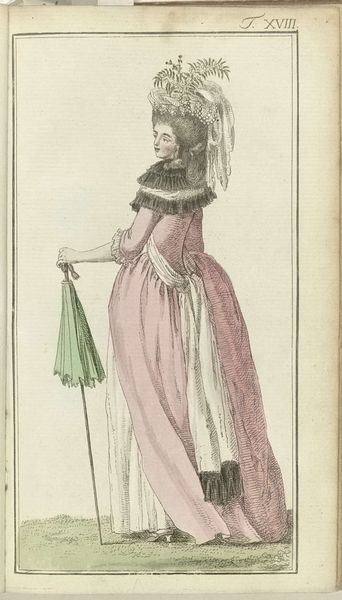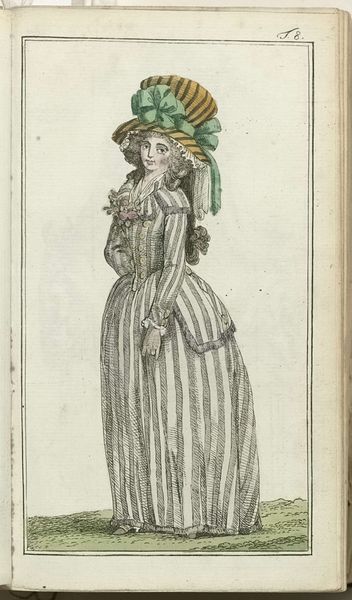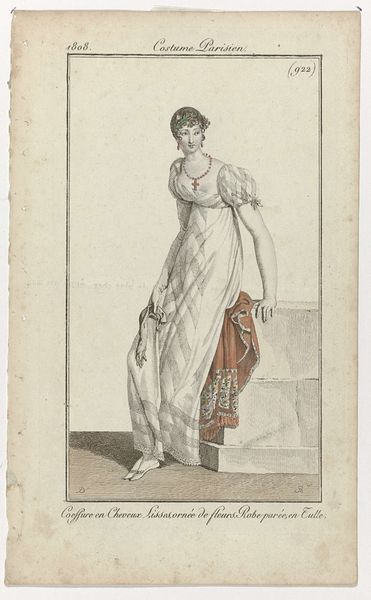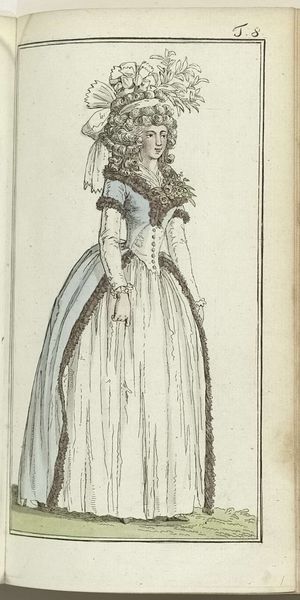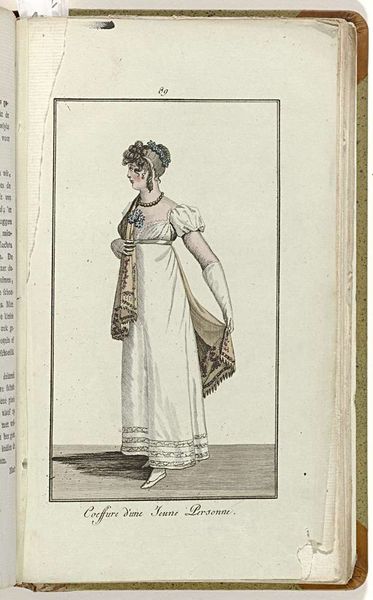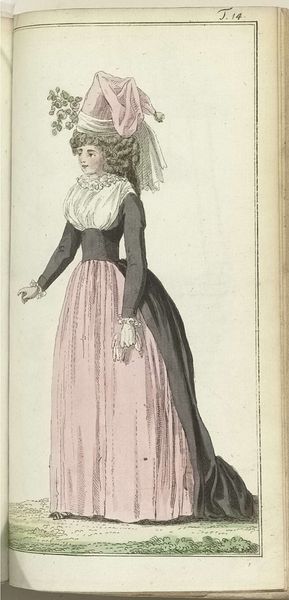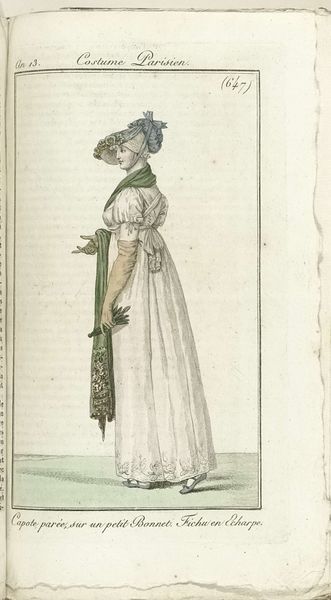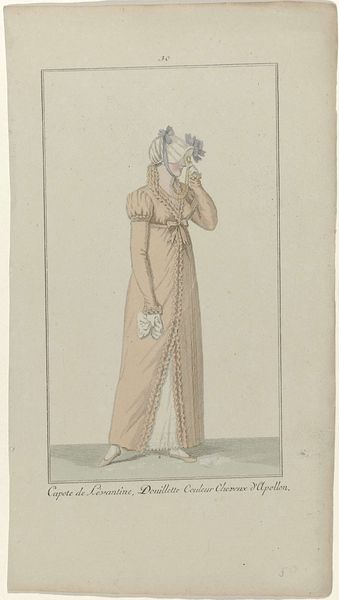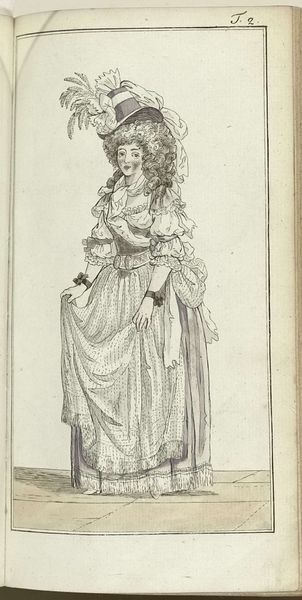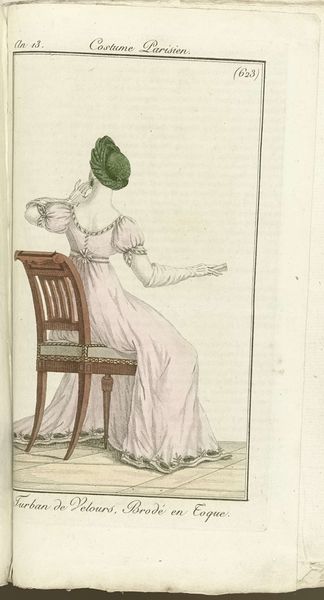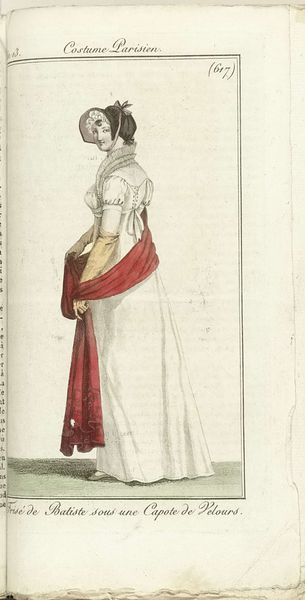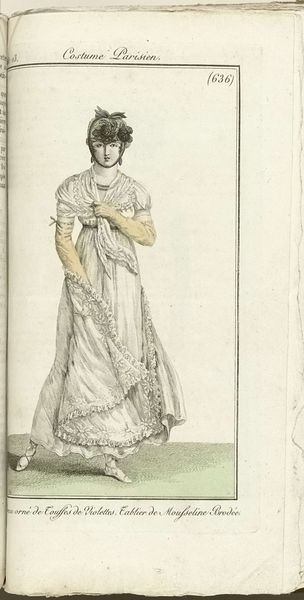
Journal des Dames et des Modes, Costume Parisien, 1805, An 13 (642) Bonnet de Dentelle... 1805
0:00
0:00
horacevernet
Rijksmuseum
painting, print, watercolor
#
portrait
#
neoclacissism
#
aged paper
#
toned paper
#
painting
# print
#
figuration
#
watercolor
#
watercolour illustration
#
genre-painting
#
decorative-art
#
dress
#
watercolor
Dimensions: height 181 mm, width 112 mm
Copyright: Rijks Museum: Open Domain
Editor: This is "Journal des Dames et des Modes, Costume Parisien, 1805, An 13 (642) Bonnet de Dentelle…" from 1805. It seems to be a watercolor print of a woman's fashion. The tones are very soft, almost faded. What catches your eye in this piece? Curator: Beyond the delicate rendering, I'm drawn to the context of its creation. This wasn't just about pretty dresses. These fashion plates reflected a newly-stabilized, post-revolutionary French society. How might we see this emphasis on elegance as a deliberate reconstruction of social order after a period of upheaval? Editor: That’s a really interesting way to look at it. I was just thinking about the aesthetics. So, you see it as a political statement almost? Curator: In a way, yes. Consider the neoclassical style, echoing ancient Greece and Rome. What did those societies represent to the French at this moment? Also, who was this imagery *for*? Were these images accessible to everyone, or were they targeted at a specific social class? Editor: I suppose mainly the upper class… a way to set themselves apart through fashion and access to these publications. Curator: Exactly. And by adhering to these styles, what kind of performance was each women engaging in and to what end? We have to consider not just the individual woman, but the power structures at play. Does seeing it in this context shift your perception of the "faded tones," perhaps seeing them as less delicate and more pointed? Editor: It does, actually. I am suddenly much more aware of how the image is less about art, but about how fashion can convey political and social status in post-revolution France. Curator: And that fashion could then reflect a conscious effort of rebuilding of a nation. Editor: This really gives me a fresh perspective on how something as simple as a fashion plate can speak volumes about a specific time and place.
Comments
No comments
Be the first to comment and join the conversation on the ultimate creative platform.
